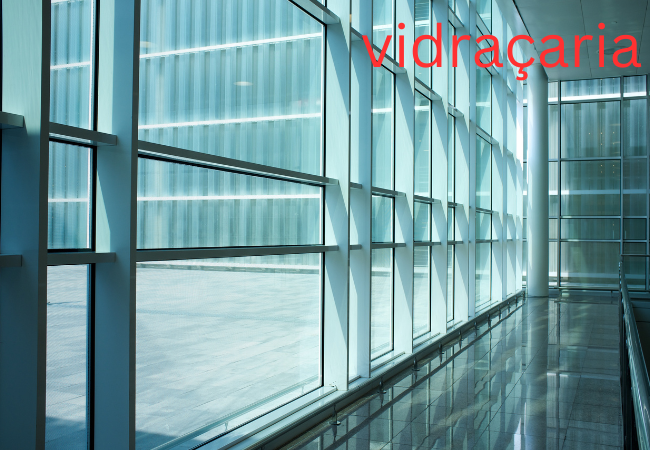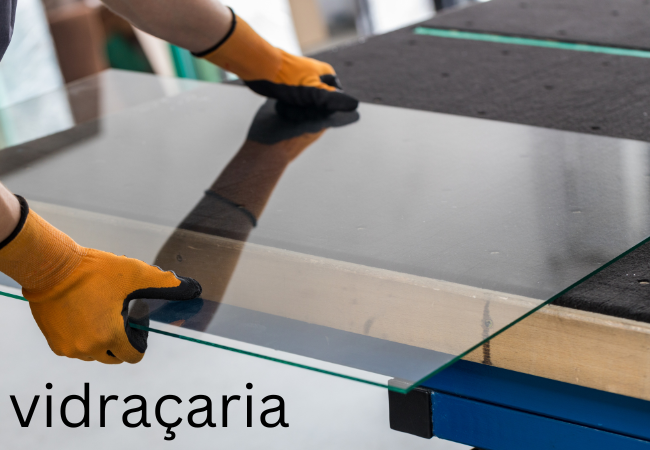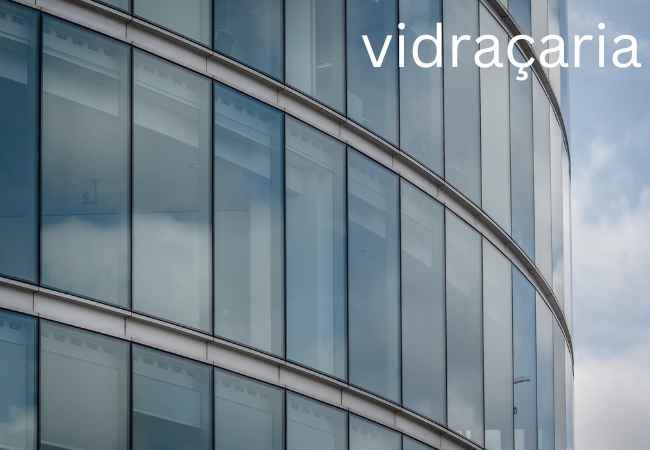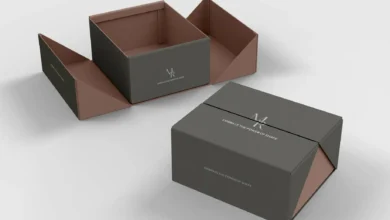What is Vidraçaria?
Vidraçaria, simply put, is the art and craft of glasswork. This encompasses everything from the manufacturing of glass to its application in various structures and designs. Glass has been a cornerstone in architecture and design, offering not just functional benefits but also aesthetic value.
The Importance of Glass in Modern Architecture
Modern architecture relies heavily on glass to create open, light-filled spaces that connect the indoors with the outdoors. The transparency, versatility, and elegance of glass make it an essential material in contemporary building designs.
Historical Background of Glassmaking
Origins of Glass
Glassmaking dates back to ancient Mesopotamia and Egypt, around 3500 BC. Initially used for decorative objects like beads and vessels, glass gradually became a significant material in construction and art.
Evolution of Vidraçaria Through the Ages
From the stained glass windows of medieval cathedrals to the sleek, minimalist designs of today’s skyscrapers, vidraçaria has evolved significantly. The technological advancements in glass production and treatment have expanded its applications and enhanced its properties.
Types of Glass Used in Vidraçaria
Float Glass
Float glass is the most basic form of glass, created by floating molten glass on a bed of molten metal. It is smooth, clear, and used in a variety of applications, from windows to picture frames.
Tempered Glass
Tempered glass is treated with heat to increase its strength. It shatters into small, less dangerous pieces when broken, making it ideal for safety applications like shower doors and automobile windows.
Laminated Glass
Laminated glass consists of two or more layers of glass with an interlayer of polyvinyl butyral (PVB). This interlayer holds the glass together even when broken, providing enhanced security and sound insulation.
Insulated Glass
Insulated glass units (IGUs) are designed to improve energy efficiency. They consist of two or more glass panes separated by a spacer and sealed to create an air gap, which acts as an insulator.
Decorative Glass
Decorative glass includes stained, frosted, etched, and colored glass, used to add artistic elements to buildings and interior designs.

Applications of Vidraçaria
Residential Uses
Windows and Doors
Glass windows and doors are fundamental in homes, providing natural light, ventilation, and a connection to the outdoors. Modern designs often incorporate large, floor-to-ceiling windows for maximum impact.
Glass Railings
Glass railings offer safety without obstructing views, making them perfect for balconies, staircases, and decks. They add a contemporary touch to any home.
Shower Enclosures
Glass shower enclosures are a popular choice for bathrooms, offering a clean, modern look while also being easy to clean and maintain.
Commercial Uses
Storefronts
Glass storefronts attract customers by showcasing the interior of the store and creating an inviting entrance. They also enhance the overall aesthetic of the commercial space.
Office Partitions
Glass partitions in offices create an open, collaborative environment while still providing sound privacy and individual workspaces.
Skylights
Skylights bring natural light into commercial buildings, reducing the need for artificial lighting and creating a pleasant working environment.
Specialty Uses
Bulletproof Glass
Bulletproof glass is used in banks, jewelry stores, and other high-security areas. It combines layers of glass and plastic to absorb and dissipate the energy of a bullet.
Soundproof Glass
Soundproof glass reduces noise transmission, making it ideal for buildings in noisy environments or for rooms requiring sound isolation, like recording studios.
Smart Glass
Smart glass can change its opacity with the touch of a button, providing privacy on demand. It’s used in conference rooms, bathrooms, and residential spaces.
The Process of Vidraçaria
Glass Cutting
Cutting glass to the desired size and shape is a precise process that requires skill and accuracy. Special tools are used to score and snap the glass.
Edge Polishing
Polishing the edges of glass removes sharpness and gives it a smooth, finished look. This step is crucial for safety and aesthetic reasons.

Drilling and Shaping
Drilling and shaping allow for the installation of hardware and fittings. This is particularly important for custom glass projects.
Installation Techniques
Proper installation ensures the longevity and performance of glass installations. This includes securing the glass properly and sealing it against moisture and air leaks.
Benefits of Using Glass in Construction
Aesthetic Appeal
Glass adds a modern, sleek look to any building. Its transparency and ability to reflect light make spaces feel larger and more open.
Energy Efficiency
Insulated glass helps to reduce energy costs by maintaining indoor temperatures. It keeps heat out in the summer and retains warmth in the winter.
Durability
Modern glass treatments have made it incredibly durable and resistant to impact and environmental factors. This makes it a reliable choice for various applications.
Natural Light Utilization
Using glass maximizes the use of natural light, reducing the need for artificial lighting and creating healthier living and working environments.
Choosing the Right Vidraçaria Service
Factors to Consider
When selecting a vidraçaria service, consider their experience, reputation, and the quality of materials they use. Check for certifications and customer reviews.
Questions to Ask a Vidraçaria Provider
- How long have you been in business?
- Can you provide references from previous clients?
- What types of glass do you specialize in?
- Do you offer a warranty on your work?
How to Evaluate a Vidraçaria Company
Look for companies with a proven track record and high customer satisfaction. Visit their previous projects if possible, and ask about their process and materials.
Maintenance and Care for Glass Installations
Cleaning Tips
Use non-abrasive cleaners and soft cloths to clean glass surfaces. Avoid harsh chemicals that can damage the glass or its coatings.
Preventing Damage
Install protective films or coatings to prevent scratches and other damage. Be mindful of the weight and impact on glass surfaces.
Repairing Minor Damages
Small chips and cracks can often be repaired with special resins. For more significant damage, it’s best to consult a professional.
Innovations in Vidraçaria
Advances in Glass Technology
New technologies have improved the strength, clarity, and versatility of glass. Innovations like self-cleaning and electrochromic glass are changing the industry.
Sustainable Glass Solutions
Eco-friendly glass options are becoming more popular, including recycled glass and energy-efficient insulated glass units.
Future Trends in Vidraçaria
Expect to see more smart glass applications, improved energy efficiency, and sustainable practices in the vidraçaria industry. The future of glasswork is bright, with endless possibilities.
Conclusion
Vidraçaria is an integral part of modern construction, offering aesthetic, functional, and environmental benefits. From the historical evolution of glassmaking to the latest innovations, the world of glass is vast and fascinating. Whether for residential, commercial, or specialty applications, choosing the right glass and vidraçaria service can transform spaces and enhance their value.
FAQs
What is the lifespan of glass installations?
The lifespan of glass installations can vary based on the type of glass and its application. Typically, well-maintained glass can last several decades.
Can glass be recycled?
Yes, glass is highly recyclable. It can be melted down and reformed into new glass products without losing quality.
How is tempered glass different from regular glass?
Tempered glass is heat-treated to increase its strength. Unlike regular glass, it shatters into small, less dangerous pieces when broken.
What are the safety measures in vidraçaria?
Safety measures include using tempered or laminated glass, proper installation techniques, and regular maintenance to prevent accidents.
How can I reduce energy costs with glass installations?
Using insulated glass units, low-emissivity (Low-E) coatings, and proper sealing can significantly reduce energy costs by improving thermal efficiency.




